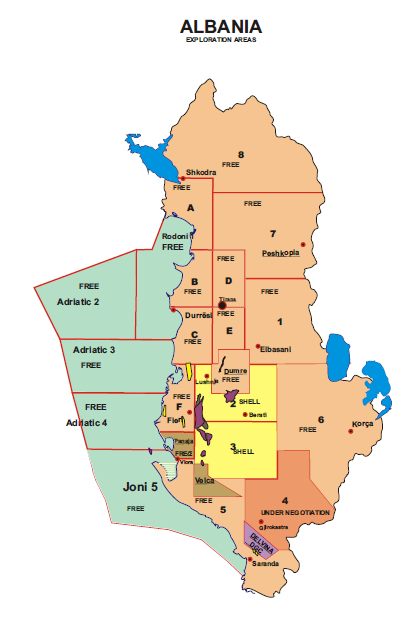Overview
Albania is a net importer of electricity; power supply security is a challenge. Albania’s domestic generation is almost entirely dependent on hydropower since the country’s only thermal power plant is currently inoperable.
The total installed generation capacity has increased over the last few years because of new private investments in hydro power plants and more recently in small solar farms. In 2020, total installed capacity increased by 231 MW, for a total of 2,506 MW, of which 1,448 MW are state owned (1,350 MW hydro and 98 MW thermal), with the remainder private. During 2018-2020 several investments in small solar farms were finalized, increasing solar generation capacity to 21 MW. The government has granted preliminary approval for several wind farms.
Construction of new generation sources and transmission lines, improvements to the grid, and investment in renewable energy all represent promising investment opportunities in Albania.
Over the past decade, the government has undertaken a series of public investments and initiatives to address sector shortcomings, chiefly with support by international donors.
Hydropower
The government has approved concession contracts for construction of more than 300 hydro power plants (HPP) since 2006 with capacities ranging from 1 MW to 320 MW. Most of the HPPs have installed capacity of less than 10 MW. During 2020, almost 20 new generation sources or close to 231 MW installed capacity entered generation. The largest is HEC Moglica, an investment of Norwegian Statkraft, with installed capacity of 177 MW.
Wind and solar power
In early 2017, the government approved legislation to promote electricity generation from renewable sources, including wind and solar. Units of less than 2-MW solar and 3-MW wind benefit from approved feed-in tariffs for 15 years.
Solar
To date, 11 small solar farms with an installed capacity of 2MW are connected to the grid. The government signed an agreement in July 2020 with the French company Voltalia for a concession contract for the construction of a solar farm, in Karavasta, with 140 MW installed capacity (70 MW with a PPA and 70 MW with no PPA) In March 2021, the GOA awarded the second contract to Voltalia for the construction of a solar farm, in Spitalle, with 100 MW installed capacity (50 MW with a PPA.)
Wind: The National Action Plan for renewable energies promotes the investments in the development of small-scale wind parks of less than 3 MW for a total of 30 MW installed capacity.
Leading Sub-Sectors
- Transmission and distribution equipment
- Smart grid solution equipment and services
- Renewable Power equipment and technplogies including hydro, solar, and wind.
- Design and Engineering services
Opportunities
The energy sector represents good investment and trade opportunities in a variety of areas. The construction of new generation sources and transmission lines, improvements in the distribution grid and the promotion of energy efficiency all represent opportunities to provide equipment, services, and financing.
The following resources might be helpful when exploring for opportunities in the energy sector.
- EBRD Projects in Albania
- Western Balkans Investment Framework Projects in Albania
- World Bank Projects in Albania
- Ministry of Infrastructure and Energy
- The Energy Regulator
- Albanian Power Corporation (https://www.trade.gov/node/add/knowledge_product)
- The National Natural Resource Energy (http://www.akbn.gov.al/)
- Transmission System Operator
- Albanian Investment Development Agency
- Statkraft
- Electric Energy Distribution Operator
- Trans Adriatic Pipeline
- Ayen As Energy
